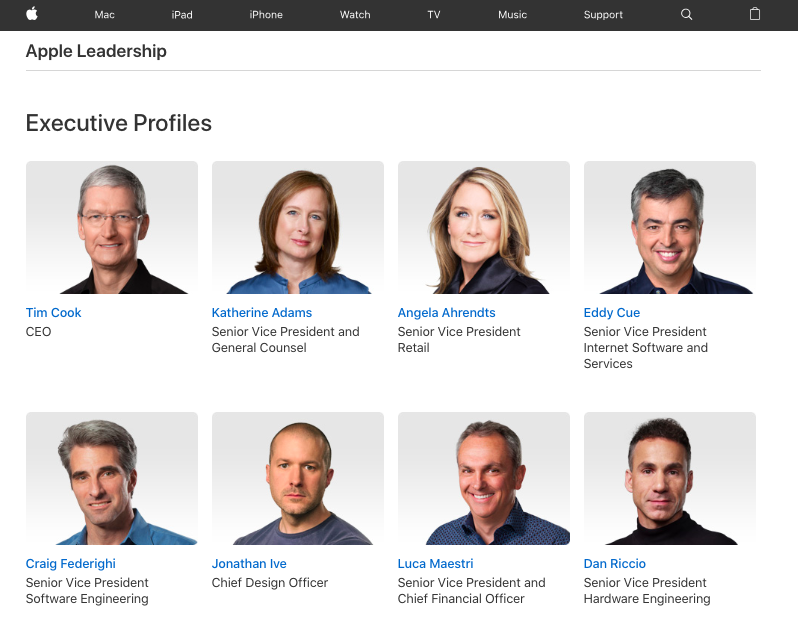Account Based Marketing
What is Account-Based Marketing (ABM)?
What if you could get the right message in front of the right decision makers to make major deals for your business? If you work in sales, this is the dream. If you work in marketing, this is the goal of every day.
Unfortunately, when you’re selling a $500,000 laser cutting device or a multi-million dollar software deal, the audience is pretty small and the stakes even higher. There are only a few hundred to a few thousand people that you’re trying to reach.
The truth is that leads in these industries are incredibly valuable. After all, if someone is looking to buy a piece of manufacturing equipment, the profit margins on that are often huge. The same is true with a software project or a construction project.
A lot of these markets are also niche, meaning that there might only be 2-3 major competitors in your industry.
In the business to business (B2B) marketing space, there’s an expert marketing strategy gaining new interest that’s designed to address this problem. It’s called Account Based Marketing, or ABM.
Account-based marketing isn’t new. ABM can be a viable option for a lot of B2B marketing. In this guide, we’ll talk about how ABM works, how it’s implemented, and whether it’s a good marketing strategy for you.
ABM is simply the process of determining the key accounts (people) that you want to get in front of, then putting together marketing and sales materials to connect directly with those prospects.
Watch a quick & simple ABM breakdown
Sales vs. Marketing or Sales and Marketing?
In most organizations, there is some conflict between sales and marketing. Sales don’t want to waste their time following up on “garbage leads,” while marketing is trying to get its much-deserved credit for branding and exposure.
The most successful sales and marketing teams work together. The easiest way to make their teamwork seamless and unified is with account-based marketing.
Account-based marketing requires buy-in from both sales and marketing. Even though it has marketing in the name, it’s a fundamental strategy that requires input from both marketing and sales. In order to be successful, the two parts of the organization must join forces.
How do you Create an ABM Campaign?
Once your sales and marketing teams have decided that ABM is a fit, knowing the ins and outs of the strategy is key. We will briefly describe each element of the process and then go into more detail.
Prospects – You will need a thorough list of all potential prospects. These are the “accounts” in account-based marketing. Ideally, you want their actual email addresses, although some tools allow you to just put in the company, job title, zip code, and you fill in the rest. If you use a CRM system, you’ll want to make sure all your potential contacts are updated within the system.
Persona – The next step is creating a persona for the specific person you’ll be in contact with. What separates a true ABM campaign from a direct sales campaign is that with ABM, you’re actually connecting with people by providing valuable content, expertise, and “wooing” them to your brand.
Knowing your prospect’s needs, wants, desires, and fears are helpful here. If you understand your customers deeply, a rough persona on the back of a napkin may be enough. But if budget allows, additional research (or at least a few face-to-face meetings) will help you better understand and empathize with your prospect.
Message – Once you’ve established a target list of prospects and built out a persona, the next step is to create content to get in front of your prospects. The temptation here may be to jump right into ads that scream “Buy! Buy! Buy!”. Instead, provide value and expertise first through a white papers, ebooks, webinars, video series, or other pieces of content.
Remember, this content should be so valuable that someone would actually be willing to pay for it. The world is full of enough ebooks and white papers that don’t actually contain real value. If you actually provide something of value, then you’re in that small percentage that makes your content irreplaceable.
Follow Up – Following up is another huge opportunity that most marketing campaigns miss. In fact, often the best way to build a relationship is to continue to provide value far into the future. Gary Vaynerchuk talks about the concept of “jab, jab, jab, right hook”. Another way to frame this is “give, give, give, ask”. Each jab is adding value to the user. Then when it’s time to go in and make the sale (right hook), you’ve already established trust with the consumer. It’s then time to close the deal.
Now, let’s learn how to put together a real ABM campaign.
Prospects:
How do you create a list of prospects? There are multiple ways to do this, but we’ll start with a few key options.
- Your existing CRM – If you already have prospects in a CRM, the easiest next step is to transport them from there. Ideally, you want people who are in your target market, who are already aware of your brand, and who may have already had engagement with you in the past. These prospects will be more likely to convert than cold traffic.
- Companies List – You can make a list of companies that you’d like to target. These should all be companies that would actually purchase from you. Generally, you want to include a few things when making this company list:
- Name of Company
- URL of company website (many targeting algorithms are URL based)
- Title(s) of people who are or have direct influence of the final decision. Normally large purchasing decisions like this aren’t made in a vacuum, so it’s important that you spend time to understand who the decision makers are and then contact them directly.
- Connect with the Sales Team – Generally, you’ll want to connect with your sales team and get them onboard in order to get any prospects that should be part of the ABM campaign included. Often these are already part of your Salesforce or other CRM systems.
Once you have a list of all of the companies, prospects, decision makers, and job titles, you’re ready to move on to persona(s).
Persona(s):
In traditional marketing, you create a list of personas for your ideal prospect. For example, let’s say we want to target Adam.
We’d put together some information about Adam that looks something like this:

Name: Adam
Age: 40
Location: Boston, MA
Job Title: Product Manager
Stressess:
– Not enough time to manage email.
– Often feels frazzled and disorganized
Solution: {input your solution here}
Now let’s say we had a software package that we wanted to sell to someone at Apple. Here would be a few of the faces we could go after:
- Angela Ahrendts – If the software had anything to do with retail, she would be a good candidate.
- Philip Schiller – Worldwide marketing head.
- Tor Myhren – Marketing communications.
From here, you’d actually want to dig a bit deeper into the organization. With a company the size of Apple, there are dozens of different directors, vice presidents, and project managers that would have some influence on the decision-making process.
We would then make a list of these influencers, understand their unique background and needs, and then build out a content strategy to target them.

Depending on the prospect, you may add a bit more information or even include a photo of “Adam”.
Now let’s look at the ABM approach. Instead of marketing to “Adam”, we will use a real name of a real person at a real company.
Let’s look at Apple. To see who is on the leadership of Apple, we simply go to their Leadership page. From the titles alone, we can see the real people who lead Apple every day.
Researching Personas
From here, you want to do your best to understand each influencer and their need. To take the software package as an example, the CFO may actually be a major factor in the decision. His or her concerns are likely financial metrics driven (ROI, savings, etc.) whereas the marketing head might have other needs (efficiency, reach, targeting, etc.).
One of the most important things to do is understand the unique needs and apprehensions of the key decision makers.
If you don’t understand what each stakeholder needs in order to make the sale, you’re not ready to launch an ABM campaign!
The trick is getting the right message in front of the right stakeholder at the right level in each organization. That’s what makes ABM successful.
Message
At this point, let’s assume you have a list of the people you want to target. You know more about their needs and wants than you ever thought possible.
Using the tools at our disposal, you’re able to get in front of them. You now have the stage. So what do you say? This is your message.
The biggest mistake made at this stage is the “Buy NOW!” approach. Though this is tempting, these customers are talented, successful, and often high profile people who will not be reached this way.
They’ve worked hard to be where they are and are generally good at making wise decisions on how to spend their money. Therefore, marketing to them will take some art and creativity.
So, what do you actually say?
Awareness
First, you want to make sure they actually know you exist. Before anyone can ever even dream of buying something from you, they first have to know who you are.
Trust
Next you must establish trust. Why should they trust you over the 10 other companies who do exactly the same thing you do? How do they know you’ll deliver and not miss deadlines? How do they know you’ll make good on your promises? In the B2B space, the risk of failing on a contract can be massive. Someone could lose their job or their entire career due to picking the wrong vendor. The stakes are higher, so trust is required.
Pitch
Once you’ve made an account aware of your existence and you’ve established trust, then you’re ready for the pitch. This is where you go for the meeting, the lead, or whatever action you’re trying to accomplish. If you go too early, you’ll turn off the prospect. If you wait too long, you may miss an opportunity. Timing is everything.
In order to actually get an ABM campaign working, all three of these factors need to be included. Without any one of them, you’ll never win. For example, you can have the best trust and pitch, but if no one is aware of your brand, then they won’t be able to find you.
Conversely, you can have the best awareness and pitch but without the trust factor, you won’t close the deals. People only buy from those they trust.
Follow Up
Generally, closing is done by the sales team, but keeping awareness and trust high throughout the quoting and sales process is imperative.
At this point, marketing should be reinforcing the core message that the sales team is speaking and then also backing that message up with data, testimonials, and value in order to keep awareness and trust high.
The goal isn’t to “spam” the account until they are so annoyed they just buy, although some marketers employ this technique. In a successful ABM plan, the team creates a constant awareness of your company and creates trust so that the prospect consistently believes they’re making the right decision.
Meanwhile, the sales team should be actively following up with meetings, conversations, and other connections to actually close the deal.
Side Note: Some ABM marketers refer to this part of the marketing as “air cover” for the sales team who are the boots “on the ground”. It’s borrowed from the idea that a good military offensive requires all forces to be working together strategically to destroy the enemy. If you ignore the fact that you’re not trying to blow up your customers, then this is an accurate analogy.
The Tech Stack for ABM
Since tech is always changing and thus the tools are always changing, staying current on the tech stack for ABM is a challenge. Below are the best-fit practices with the current tech knowledge.
Ad Platforms
There are top end tools in the ad industry with these companies:
Marketo was recently purchased by Adobe for $4.75 billion dollars, making them a serious player in the industry. But you’re going to need to invest a bare minimum of $2,000 a month just for the software – not including any ad spend or other tools.
This is a great option if ABM is a core part of your marketing and you have the team to utilize such a tool, but for many small and medium-sized businesses, it may be more than what they need.
Terminus is another popular ABM platform. They don’t publish pricing, but it also tends to be on the expensive side for SMBs. They are, however, one of the up-and-coming platforms and they have been producing a good bit of content around ABM and ABM education, so it’s worth checking out and trying a demo.
There are more budget-friendly solutions:
ListenLoop is a new player to the game. To do account based targeting, ListenLoop starts at $99/mo plus a required spend of $300/mo. That means with about $400/mo, you can get into the ABM game.
AdRoll also has an ABM platform they are developing, but they are less well known and it will take some time to see how that develops.
Salesforce
If you’re looking into customer relationship management systems, Salesforce is one of the best. Although Salesforce can take some time to learn and can be expensive, if you’re doing ABM, it really is the CRM you should think about.
If you’re already deeply invested in another CRM, just make sure it integrates properly with whatever tools you’re using.
Inbound
As a part of a good ABM campaign, you’ll need to be able to quickly spin up landing pages, microsites, and email collection campaigns. You’ll also need to send automated email blasts and otherwise develop and deploy assets in support of your business. You can do this through manual means, like on a Wordpress website, or through an inbound marketing platform, like Hubspot or Pardot.
While this matters a little less than your CRM, integration is still important in determining the success of your marketing. Flexibility here is key. You’ll be creating a lot of content and if it costs you massive amounts of money and time to get something built, you’re going to limit your success from the start.
Other Tools:
Another necessary software tool you’ll want installed is analytics. We always recommend starting with Google Analytics then adding others based on need. If you use Hubspot or Pardot, they have their own analytics tracking code that you can use to build up a powerful tracking system.
Offline:
An often neglected part of ABM is the offline campaign. I recently sat down with a marketing company that wasn’t familiar with the digital side of ABM but literally mailed trees to their prospects for a potential client.
Yes, small trees packed in a little cardboard tube. This type of creative and memorable offline campaign, paired with our online advice, is the ABM strategy at its best.
Another great way to build an offline reputation is with events. People love events, whether it’s attending, hosting, or speaking at them. Events are a great opportunity generator for both learning and networking.
What does the rest of a good ABM campaign look like?
At this point, you should have a list of prospects within the organization. Underneath each prospective client, you should have a list of key stakeholders and decision makers you’d like to connect with.
You should also have your tech stack in place so you can target those people with unique ads, content, targeting, and other tools.
The final key element is salesmanship.
Even if you’ve amassed the best tech stack, targeting, and client list, if you don’t focus on the creative aspect – the content that actually sells – then ABM will not succeed.
The best way to master salesmanship is to build out a value ladder. The value ladder is a common concept in marketing and is often a great way to build an ABM campaign. Here is a diagram of what a value ladder looks like.
As you move up the “ladder”, you’re providing more value to the customer, but you’re also gaining the opportunity to charge more.
For example, if you’re a manufacturing or service company, the value ladder may look like this:

This is our internal value ladder for Analytive clients and customers.
Typical Value Ladder
Step 1: User consumes your blog content (free)
Step 2: User downloads white paper, webinar, or other long-form content (usually requires email or contact info to be submitted)
Step 3: You connect with the user and discuss a product, then provide a sample or demo.
Step 4: You work with the user to solve challenges with the product and make them believe your product is the best fit
Step 5: You do a final proposal and ideally close a deal for a large purchase of product or services.
An ABM Value Ladder
For ABM campaigns, the value ladder may look a little different. Because these are large decision makers, you may not get money until the very top rungs of the ladder. For example, in a construction contract, it’s a winner-take-all campaign most of the time.
So in order to build a value ladder in that type of industry, you’re simply asking for more interaction and engagement instead of payment.
With ABM, the value ladder may look like this:
Step 1 (same as above): User consumes your blog content (free)
Step 2 (same as above): User downloads white paper, webinar, or other long-form content (usually requires email or contact info to be submitted)
Step 3: Direct sales contact. Try to help them solve or determine a solution to a small problem.
Step 4: Begin ongoing engagement, such as consulting, to build trust and establish rapport.
Step 5: Upsell user to the full gamut of services or products you provide.
Here’s the key: when possible, you want to establish trust and move them up the value ladder. This isn’t always possible as some agreements and contracts are winner-take-all, but when possible, you want them to trust you and to keep moving along the sales pipeline into larger engagements with you.
It’s like Chutes & Ladders
Remember that game you played as a kid, Chutes and Ladders?
A good ABM campaign is a bit like that because you don’t just have one value ladder that you’re creating. You’re creating a unique value ladder for each stakeholder (or at least each type of stakeholder) in the decision making process.
For example, you’ll want to be creating a lot of content around ROI and the dollars side of your business to sell the CFO.
Meanwhile, you’re going to want to really talk about growth and opportunity to the marketing team. So good ABM often means producing a LOT of content in a way that moves various stakeholders up their unique value ladder as naturally as possible.

The Truth? ABM can be hard.
The amount of content one can produce for an ABM campaign can be overwhelming. There is a lot of content to be created, a lot of moving parts to manage, and a lot of technical integrations that need to happen.
But when done well, ABM can have a huge impact on the business. According to ITSMA, 87% of marketers believe that ABM produces a better ROI than any other marketing channel. That’s a huge percentage increase and well worth the time and effort. And that’s where we can help.
Want to chat more?
If you’re looking for a partner for ABM, we should certainly talk. Our plans start at $5,000 a month and help you map out content and get it in front of decision-makers at key companies. Fill out the form below and one of our team members will be in touch soon.